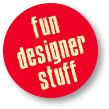People
Kathryn Brewer
Design Philosophy
Design follows the message
Design is not just making something beautiful. Design does not dictate the content. Design is not about the designer. Good design is about enriching and clarifying the content of the material. The length of the articles, the strength of the imagery, and expectations of the audience are all considered in the design process.
We read material thoroughly, access audience expectations, and consider appropriate style, color and typography to be right for each product. Good design is a truly custom product.
Good design strengthens and enhances the core message of the product.
Form follows function
In creating materials for print production or website, design must account for the functional needs of the production process. As an example in the world of architecture, Helmut Jahn's 1985 State of Illinois building in downtown Chicago is radically different from the linear black glass walls and classical architecture of surrounding buildings. But what really sets the building apart is the dramatic sunlit cavernous space inside. The south-facing glass roof not only lets in light, but magnifies the heat of the sun in the summer. Cost concessions led to less expensive glass than was originally planned, so air conditioning in the building as built was not functional. The state spent millions to try to fix a problem that continues to plague the building and could have been addressed in the design stage.
Design for print and web function and production needs to allow for a certain amount of latitude in the process. Edges may not trim exactly as planned, folds may not always be exactly along photos or boxes, solid coverage can vary from page to page. Fonts may not be available on individual computers, images can shift, different browsers render elements slightly differently.
We design materials to be produced and rendered to look as good when finished as they do conceptually. The form (design) follows the function (production and rendering processes).
Message follows needs
The introduction to an organization on the website main page can be overwhelming if every possible avenue of information is available on the home page. The mantra remains "three clicks to content," but a gentler, highly visual approach creates a simpler, more intuitive navigation experience. Older websites tend toward many top navigation tabs with drop downs for everything else. This pancake approach condenses navigation to get to most of the content to only two levels.
A newer approach is to divide the audience expectations into a very limited set of categories with visual cues to content. On the subsequent pages in this inverted pyramid form, a wider but more relevant set of visual cues provides further options, and a third or more layer of information finally provides specific in-depth information. The sides and footers of the introductory pages provide basic information and sidebars with short relevant content. Content that is appropriate sitewide is accessible from many pages, linked to indepth information.
Thorough and consistent structural planning is essential to ensure successful intuitive navigation.
Website design follows three main stages:
- structure and intuitive navigation planning
- functions to provide relevant information and data expression
- content in words, photos and graphics to convey the substance of the site.
Successful design and planning provides a rewarding navigation experience and enhances the core message of the website.



